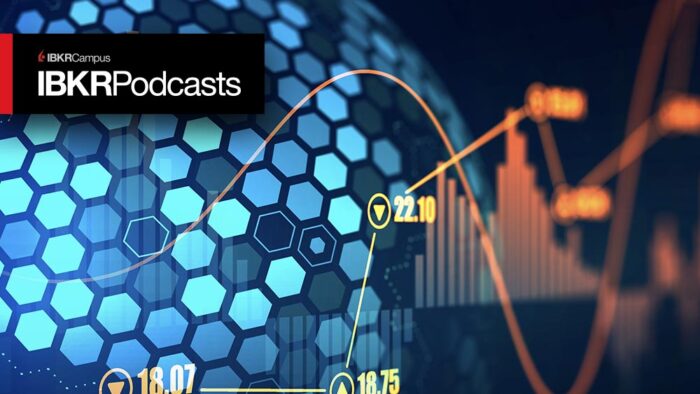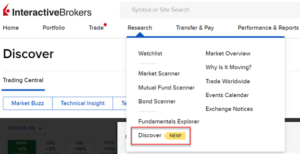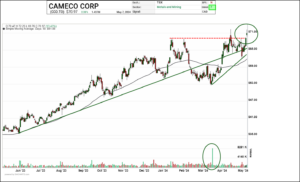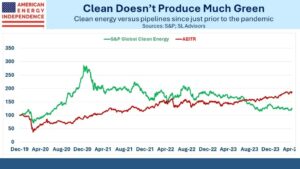This morning, anyone who watches business news programming in the US was treated to breathless, wall-to-wall coverage of William Shatner venturing where no man a handful of rich men and their traveling companions had gone before. The coverage of Blue Origin’s flight had me pondering two questions: 1. Did he book the trip using Priceline’s name your own price feature, and 2. When will networks cease interrupting their programming for billionaires’ non-public companies shooting large phallic symbols into sub-orbit? Yet before I could consider the answers to those imponderables, Captain Kirk was safely back on Earth. I then began to consider the similarity between the brief spaceflight and the recent activity in the US stock market.
Lately, pre-market futures and early cash trading has shown a tendency to blast off around the market’s opening, only to gently parachute lower afterwards. Consider the following chart:
December E-mini S&P 500 Index Futures (ES), Intraday Graph from 9 to 9:45 EDT, 10 Trading Days
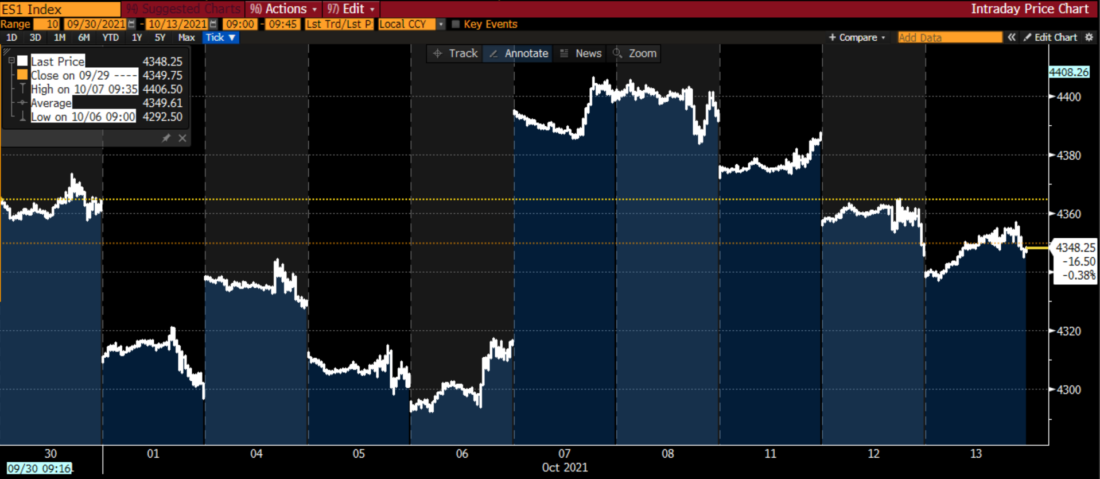
Source: Bloomberg
We see a pattern here. Either in the time directly leading up to the open, or immediately thereafter, there is a ramp up in ES futures. On most of the mornings, the ramp is short-lived. It is my opinion that these bumps are caused by reflexive buying – meaning that traders buy futures before the open because they have a history of rallying shortly thereafter. I’m frankly not sure if it’s strictly algorithmic (e.g. if it’s 9AM, buy, then sell at 9:45), or if some traders attempt to lure less wary traders into the market so that the first group can sell to the second higher prices. I suspect it’s some of each.
In a video posted yesterday, I used the term “suckers rally” to refer to the latter technique, and that has been applicable over some of the past few sessions. We closed lower on 6 of the 9 trading days shown in the graph above, yet we saw the pattern hold even on those days (the 10th is today, and we’re still open). There can certainly be valid reasons to buy stocks when the market opens, but doing so reflexively – simply because they’re rising at that moment in time – is not proving to be one of them.
While we’re discussing intraday trading patterns, it seems like a good time to check in once again with the afternoon fade that we noticed about a month ago (The Noon Swoon – Traders’ Insight (tradersinsight.news)) At the time we were seeing major indices fade during the afternoon on both up and down days. We attributed it to a lack of demand from large institutions who tend to work large orders throughout the day. Optimistic traders bought stocks in the morning, anticipating the usual follow-through buying from large institutions, only to sell their longs when those buy orders proved elusive.
Successful traders aren’t stupid. Just as they (or their algorithms) notice reliable patterns, they also notice when a pattern is no longer profitable. We see that in the chart below, which picks up after our piece was published:
S&P 500 Index (SPX) Intraday Graph from 11:30-16:00, 23 Trading Days

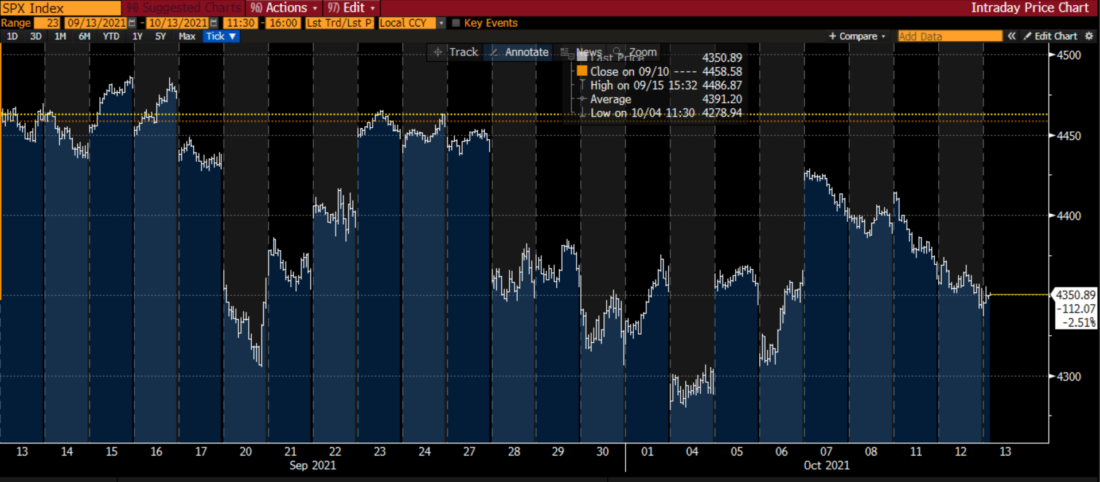
Source: Bloomberg
It is obvious that traders had recognized that the pattern had become less reliable. Patterns that rely upon someone else to take a trader out of a position usually do. If one is buying because they have a valid reason to believe that stocks will rise, then that may or may not work. If one is buying simply because they are hoping to get ahead of someone else’s order, that is likely to fail. And eventually those who fail will stop doing it. (That said, the pattern of afternoon selling has become quite reliable over the past 4 days. But that is a very small sample.)
The lesson here is simple. It can be quite profitable for traders to spot consistent patterns in the market, and by all means they should attempt to do so. But it is equally important to consider why that pattern might be working the way it does and what could cause it to stop working. All patterns come to an end eventually. Those that rely upon some sort of analysis tend to work better than those that are based simply on some other set of buyers or sellers to reliably appear simply because they have done so in the past. Those other traders recognize patterns too, and don’t want to be victimized by them. A pattern that relies solely upon others to show up can shoot up and fade out as quickly as a billionaire’s space flight.
Disclosure: Interactive Brokers
The analysis in this material is provided for information only and is not and should not be construed as an offer to sell or the solicitation of an offer to buy any security. To the extent that this material discusses general market activity, industry or sector trends or other broad-based economic or political conditions, it should not be construed as research or investment advice. To the extent that it includes references to specific securities, commodities, currencies, or other instruments, those references do not constitute a recommendation by IBKR to buy, sell or hold such investments. This material does not and is not intended to take into account the particular financial conditions, investment objectives or requirements of individual customers. Before acting on this material, you should consider whether it is suitable for your particular circumstances and, as necessary, seek professional advice.
The views and opinions expressed herein are those of the author and do not necessarily reflect the views of Interactive Brokers, its affiliates, or its employees.
Disclosure: Futures Trading
Futures are not suitable for all investors. The amount you may lose may be greater than your initial investment. Before trading futures, please read the CFTC Risk Disclosure. A copy and additional information are available at ibkr.com.















